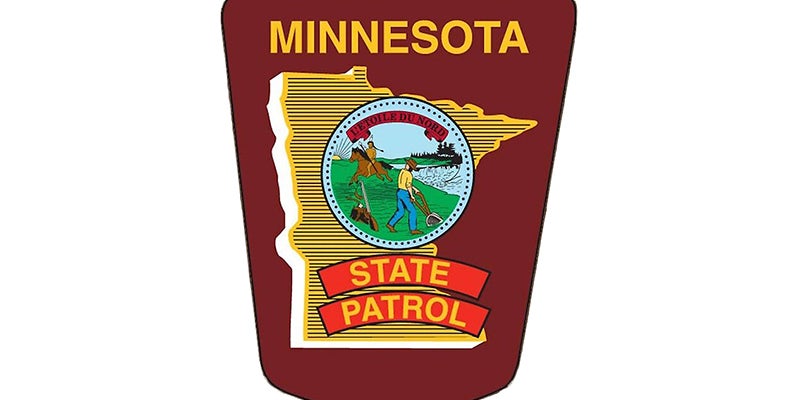Full Circle: The signs of the times
Published 9:17 am Saturday, February 9, 2019
It started in 1927, a simpler time when America began its romance with both the automobile and its roadways. Many of us remember the fundamental, unadorned two-lane byways which we, not knowing any better, thought were super highways. And a drive from Austin to a distant place like Des Moines made us feel like we were circumventing the globe.
Hands down, the Model T Ford was King. But, waiting in the wings was the new Model A, a foxy little number with “extras.” There was great excitement on the day the swanky new marvel was unveiled as thousands of expectant Americans patiently queued up outside showrooms to get their first peek. It came with such finery as windshield wings and four-wheel brakes, and it had a racy gearshift lever sprouting from the floor. The Model A also came in colors, a dramatic step up from the all-black Model T’s.
In every respect the roads of the 1920s were left wanting. What can we say about them except that they were the best we had; no one knowing anything different or anything better. If you had to search for pluses, one positive was that drivers were able to survey oncoming cars to determine if any road hogging was going on. And if so, the oogah horn blasted, ordering them to move over to their side of the road.
The complex art of overtaking and passing another car was a risky endeavor sure to straighten the hairs of everyone involved. This was especially hazardous because the narrow roads had lots of curves as they followed the lay of the land as well as the parsimonious calculations of the highway department. Road conditions were questionable at best, making it necessary for every car to have an elaborate roadside repair kit especially for the tires which regularly went flat. Virtually every outing was a challenge to see if the tires would hold out for the duration of the trip. And don’t forget the snow factor which surely killed any driving during winter. Think about it. When did you ever see a snow plow blade on a Model T?
In the absence of roadside restaurants, lunch was often a picnic spread out on a tablecloth in a farm field. Eventually, to accommodate long distance travelers, $2-a-night roadside cabins appeared, their perimeters often bordered with white washed rocks. Basic as they were, these snappy modern shelters were worlds’ more convenient than leaving the “highway” in search of a Main Street hotel which could be not only expensive, but overall demanding. Motels were so much easier and didn’t even require neckties! As time progressed, a desire for casualness set in demanding a much more relaxed dress code. These fashions would come to be known as sports clothes. Still I’m betting the women clung to their long-line Warners girdles, nervously unable to risk having any part below their waists jiggle.
While all this was evolving — and completely unrelated—Leonard Odell, an enterprising man in Minneapolis, was concocting a liniment that he claimed would cure all America’s aches and pains. Impressively potent in both action and smell, his neighbors on the ground floor of his apartment building could attest to its odoriferousness when Leonard mixed up a batch on the fifth floor.
Ambitious Leonard was a relentless, hard driving entrepeneur. In fact, too hard. His excessive labors resulted in rheumatism (begging the question of whether or not he dosed himself with his own almighty potion?). It took three years to get his health restored in which time he continued to grow his stockpile. One day, Leonard’s aunt burned her hand in hot oil. In desperation, she grabbed the only thing her medicine cabinet contained … Leonard’s ointment. Within minutes of slathering it on, the blisters disappeared, the pain stopped and later no scars developed. The stuff truly was an inexplicable, freakish wonder!
This, naturally, fired up Leonard to not only make more, but to also come up with a name. Because the essential oils for his magic formula came from the jungles of Burma, he decided to call it Burma Vita. (And now you know where I’m going with this story.) Still despite his enthusiasm, sales of his specialty liniment remained slow. What he needed, Leonard philosophized, was another product; one that folks would use all the time instead of only when they were grievously afflicted.
Meanwhile a new ointment—a brushless shaving cream—had been invented in England. It was, however, hopelessly gummy substance, a far cry from a success. Nonetheless, Leonard could see its promise. How convenient it would be to never again have to pack a wet shaving brush in his grip where it became foul smelling and moldy. Overnight he hired a chemist to work on a new formula. The first mixture was terrible. Unrelenting, it was not until they got to formula #143 that things improved. This is when Leonard discovered that if he aged the cream for 2-3 months, he got a fine shave with it. The time had arrived to start selling!
Borrowing an idea from a gas station he once saw that lined up small advertising signs along the road, Leonard bought a bunch of secondhand, nail-holed boards that had been burned on one side, cut them into 36” lengths, and painted them using a thin brass stencil and brush. He selected two major roads for his trial run: Route 65 from Minneapolis to Albert Lea and the road to Red Wing. But winter was approaching and he had to hurry like the dickens to get them into the quickly freezing ground. The first set was anything but entertaining: SHAVE THE MODERN WAY / FINE FOR THE SKIN / DRUGGISTS HAVE IT / BURMA SHAVE. Still, Leonard was on his way.
Many of us remember the challenge of spotting the charming signs, reading them aloud as our dads sped down the road. HE PLAYED / A SAX / HAD NO B.O. / BUT HIS WHICKERS SCRATCHED / SO SHE LET HIM GO. Or … MY JOB IS / KEEPING FACES CLEAN / AND NOBODY KNOWS / DE STUBBLE / I’VE SEEN. Or …. SHE KISSED / THE HAIRBRUSH / BY MISTAKE / SHE THOUGHT IT WAS / HER HUSBAND JAKE.
Travelers were addicted to the folksy humor as suspense built up to the final line: PITY ALL / THE MIGHTY CAESARS / THEY PULLED / EACH WHISKER OUT / WITH TWEEZERS. Or … THE BEARDED LADY / TRIED A JAR / SHE’S NOW / A FAMOUS MOVIE STAR. And my personal favorite: BENEATH THIS STONE / LIES ELMER GUSH / TICKLED TO DEATH / BY HIS / SHAVING BRUSH.
These jaunty little signs, utterly void of any spiteful meanness, were a delightful piece of our American past. Maybe it’s just me, but I’m thinking we could use the innocence of their homey homilies right about now.




